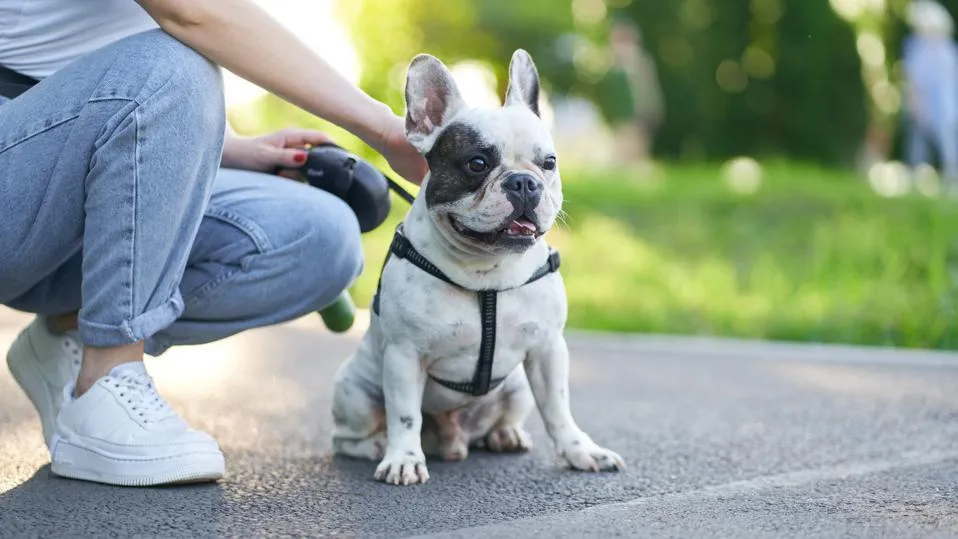The Australian Shepherd, affectionately known as the “Aussie,” is a breed that embodies the spirit of the American West.
Despite its misleading name, this hardworking, intelligent, and loyal dog was actually developed in the United States.
With their striking coats, piercing eyes, and boundless energy, Aussies have captured the hearts of dog lovers across the nation.
Let’s dive into the fascinating world of these remarkable canines and discover why they’ve become such beloved companions.
The Aussie’s Surprising Origins: Not So Australian After All
Contrary to what their name suggests, Australian Shepherds aren’t from Down Under.
The breed’s history is a bit of a globetrotting tale:
- European roots: Aussies descended from various European herding dogs.
- A pitstop in Australia: Some of these dogs traveled with Basque shepherds to Australia in the 1800s.
- Made in the USA: The breed was refined and perfected in the western United States.
It’s a classic case of mistaken identity, but one that’s led to a truly American success story.
Physical Characteristics: A Cowboy’s Best Friend
Australian Shepherds are built for work, with a lean, muscular body that’s both agile and sturdy.
Here’s what makes them stand out:
- Size: Medium-sized, with males standing 20-23 inches tall and females 18-21 inches.
- Weight: 40-65 pounds for males, 35-55 pounds for females.
- Coat: Double coat that’s weather-resistant, with a variety of colors and patterns.
- Eyes: Perhaps their most striking feature, Aussies often have heterochromia (different colored eyes).
Fun fact: About 20% of Aussies are born with naturally bobbed tails!
Temperament: Smart, Energetic, and Loyal to a Fault
If you’re looking for a couch potato, look elsewhere. Aussies are known for their:
- High intelligence: Ranked as the 42nd smartest dog breed out of 138 in Stanley Coren’s “The Intelligence of Dogs.
- Boundless energy: They need plenty of exercise and mental stimulation.
- Strong herding instinct: May try to herd children or other pets!
- Loyalty: Deeply devoted to their families.
Personal anecdote: My Aussie, Blue, once spent an entire afternoon “herding” my neighbor’s chickens back into their coop. The chickens were less than amused, but Blue was in her element!

Training and Exercise: A Workout for Body and Mind
Aussies thrive on activity and mental challenges. Here’s how to keep them happy:
- Daily exercise: At least 1-2 hours of vigorous activity.
- Mental stimulation: Puzzle toys, training sessions, and agility courses.
- Early socialization: Crucial for developing a well-rounded dog.
- Positive reinforcement: Aussies respond best to praise and rewards.
Remember, a tired Aussie is a good Aussie. Without proper outlets, they may become destructive or anxious.
Health Concerns: Keeping Your Aussie in Top Shape
While generally healthy, Australian Shepherds can be prone to certain conditions:
- Hip dysplasia
- Eye problems (cataracts, progressive retinal atrophy)
- Epilepsy
- Cancer
Regular vet check-ups and a healthy lifestyle can help prevent or manage these issues.
The average lifespan of an Aussie is 12-15 years.

Grooming: Maintaining That Beautiful Coat
Aussies have a reputation for being low-maintenance, but their coats do require some attention:
- Brush 2-3 times a week to prevent matting and reduce shedding.
- Bathe every 4-6 weeks, or as needed.
- Trim nails regularly.
- Clean ears and teeth weekly.
Pro tip: Invest in a good de-shedding tool for the heavy shedding seasons in spring and fall.
The Aussie as a Family Dog: Energy Meets Devotion
Australian Shepherds can make wonderful family pets, but they’re not for everyone:
- Great with children when properly socialized.
- Need plenty of space and activity.
- May try to herd small children or pets.
- Protective instincts make them excellent watchdogs.
Remember, Aussies need a job to do. They thrive in homes where they’re treated as active family members, not just pets.

Aussies in Popular Culture: From Rodeos to the Silver Screen
These charismatic dogs have made their mark beyond the ranch:
- Rodeo stars: Often seen performing tricks at rodeos and horse shows.
- Movie stars: Featured in films like “Famous Five” and “Babe: Pig in the City.”
- Service dogs: Excelling in roles like search and rescue and therapy work.
Fun fact: An Aussie named Hyper Hank held the world record for the highest jump by a dog (68 inches) for over 30 years!
Is an Australian Shepherd Right for You?
Before bringing an Aussie into your life, ask yourself:
- Do you have time for daily exercise and training?
- Is your living space suitable for an active, medium-sized dog?
- Are you prepared for the grooming needs?
- Can you provide mental stimulation and a “job” for your dog?
If you answered yes to these questions, an Australian Shepherd could be your perfect match.
Australian Shepherds are more than just beautiful dogs; they’re intelligent, devoted companions who will keep you on your toes.
With their striking looks, boundless energy, and unwavering loyalty, it’s no wonder they’ve become one of America’s favorite breeds.
Whether you’re looking for a working partner on the ranch or an active family pet, the Aussie is ready to rise to the challenge.
Just be prepared to keep up with them!

Breed information
| Characteristic | Information |
|---|---|
| Breed Name | Australian Shepherd |
| Origin | United States (despite the name “Australian”) |
| Group | Herding Group (AKC) |
| Height | Males: 20-23 inches (51-58 cm); Females: 18-21 inches (46-53 cm) |
| Weight | Males: 50-65 pounds (23-29 kg); Females: 40-55 pounds (18-25 kg) |
| Coat | Medium-length, weather-resistant, double coat; can be straight or slightly wavy |
| Colors | Blue merle, red merle, black, and red (all with or without white and/or tan markings) |
| Lifespan | 12-15 years |
| Temperament | Intelligent, energetic, loyal, protective, affectionate, and good-natured |
| Energy Level | High energy; very active and needs plenty of physical and mental stimulation |
| Exercise Needs | Requires at least 1-2 hours of exercise daily, such as running, hiking, or playing fetch |
| Trainability | Highly trainable due to intelligence and eagerness to please, but requires consistent and positive training |
| Intelligence | Very intelligent; excels in tasks such as agility, obedience, and herding |
| Good with Children | Generally very good with children, especially if raised with them; protective but gentle |
| Good with Other Pets | Typically good with other pets, especially dogs; may try to herd other animals due to strong herding instinct |
| Shedding | Moderate shedding year-round, with increased shedding during seasonal changes (spring and fall) |
| Grooming Needs | Regular brushing required (at least weekly) to avoid mats and tangles; more frequent brushing during shedding seasons |
| Barking Level | Moderate barkers; may bark to alert or when excited |
| Space Requirements | Best suited for homes with a yard or access to outdoor space; not ideal for small apartments without adequate exercise opportunities |
| Socialization | Needs early and continued socialization to prevent shyness or over-protectiveness |
| Health Issues | Prone to hip dysplasia, elbow dysplasia, cataracts, epilepsy, and Collie eye anomaly (CEA) |
| Diet | Requires a balanced, high-quality diet tailored to their activity level; overfeeding should be avoided to maintain a healthy weight |
| Affection Level | Very affectionate with family; forms strong bonds and enjoys being close to its owners |
| History | Developed in the 19th century in the United States for herding livestock, especially sheep; has no direct connection to Australia |
| AKC Recognition | Recognized by the American Kennel Club in 1993 |
| Ideal Living Conditions | Best suited for active families or individuals who enjoy outdoor activities; thrives in environments where they have tasks to complete |
| Famous Australian Shepherds | “Hyper Hank” (an Australian Shepherd famous for disc-catching shows) |
| Notable Characteristics | Known for their stunning merle coats, bright blue or amber eyes, and high intelligence; often used as working dogs, therapy dogs, and in dog sports |
| Herding Instinct | Strong herding drive, even in non-working settings; may try to herd people or other animals |
| Best Activities | Excels in activities like agility, obedience competitions, herding trials, and frisbee |
Sources:
- American Kennel Club (AKC): Australian Shepherd Information
- DogTime: Australian Shepherd Breed Information
- The Kennel Club: Australian Shepherd Breed Standard

















